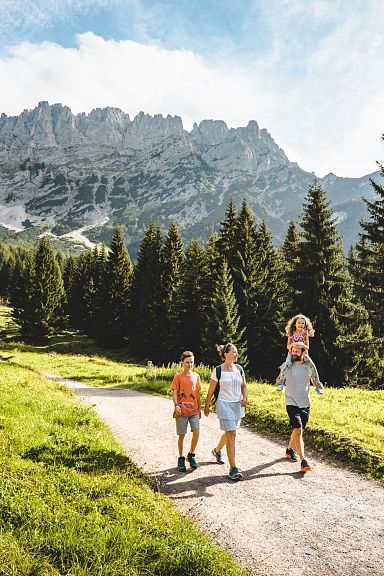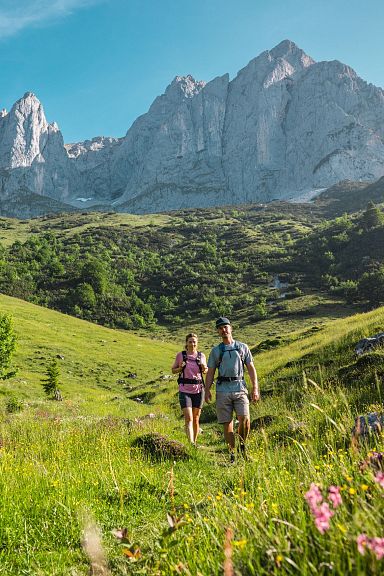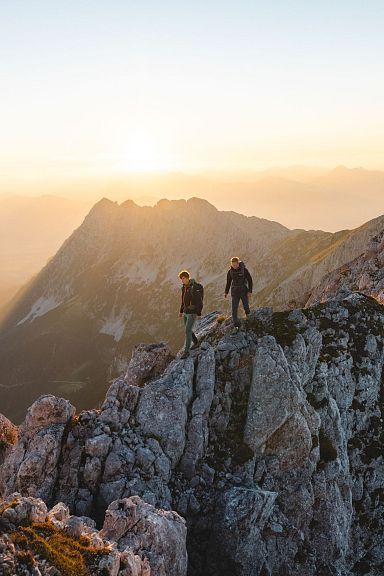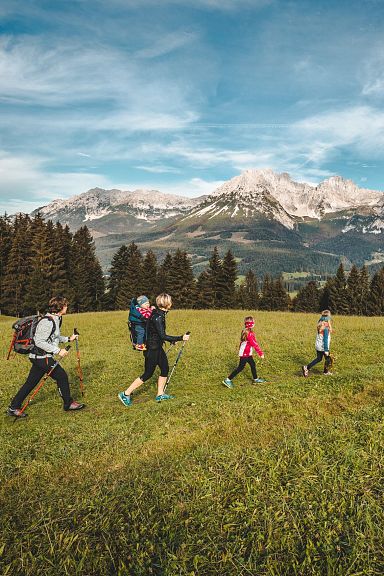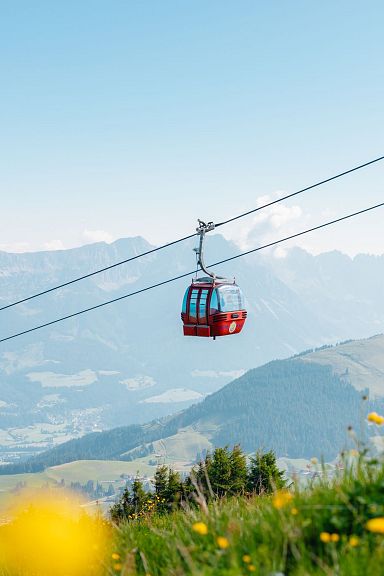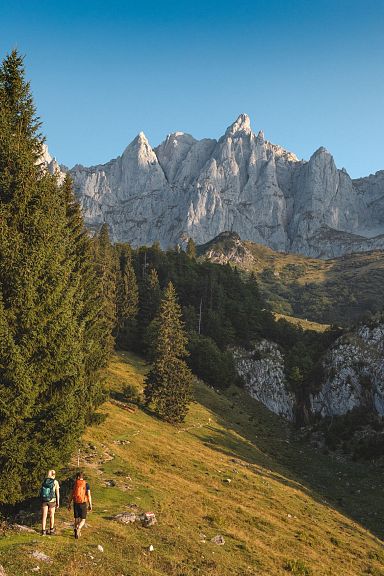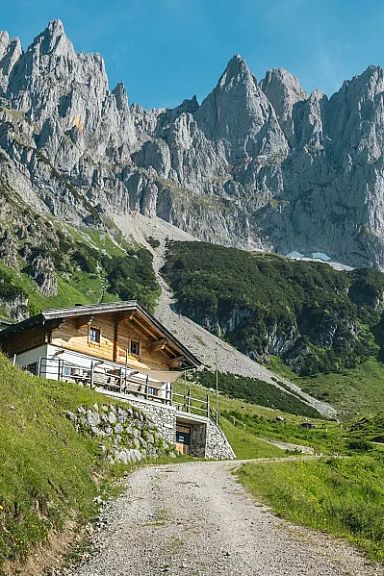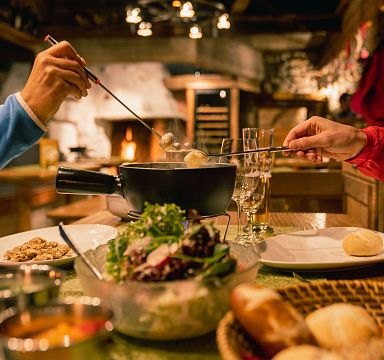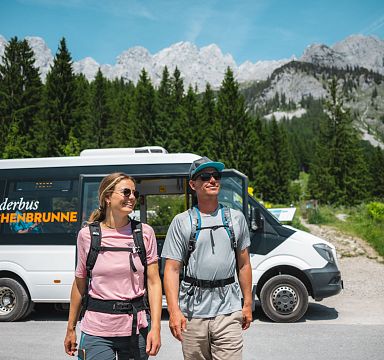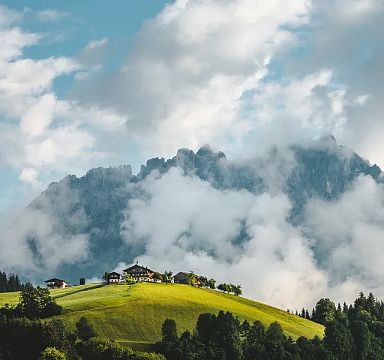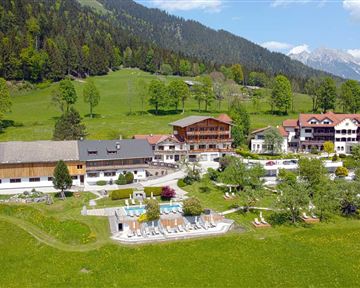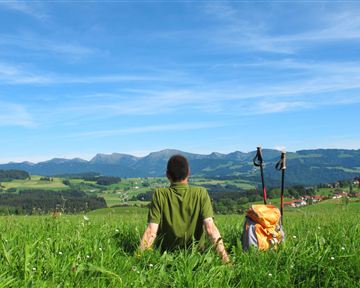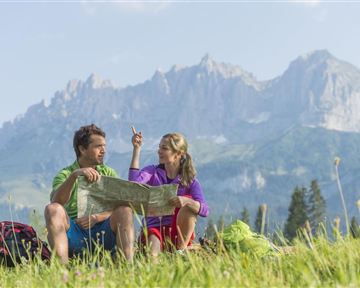Hiking in the Wilder Kaiser Region
Hiking trails, hiking tips and mountain tours in the Kaiser Mountains
The striking rock formations of the Kaiser Mountains are the defining landmark of the Wilder Kaiser region in Tyrol. Hiking and mountain trails lead through forested slopes, across alpine meadows, and up through scree fields dotted with mountain pines – all the way to the base of towering rock faces and dramatic peaks.
Across the valley, the gently rolling grassy mountains of the Northern Kitzbühel Alps offer a more relaxed hiking experience. With the help of cable cars and panoramic trails, they’re easily accessible and reward walkers with spectacular views of the Wilder Kaiser’s rugged crown.
Explore the Wilder Kaiser region in Tyrol, Austria, and discover a fascinating and varied landscape on an extensive network of hiking and mountain trails.
Hiking trails & mountain tours
according to level of difficulty and multi-day hikes
Whether difficult, medium or easy: all hiking enthusiasts will find the right route in the Wilder Kaiser region. There are also numerous family-friendly hiking tours, hikes with lift support and long-distance hiking trails.
The unique hiking region is located in a huge nature reserve and is the first Alpine region to be awarded the Austrian Hiking Seal of Quality. The four holiday resorts of Ellmau, Going, Scheffau and Söll are located directly on the sunny side of the Wilder Kaiser and are the perfect starting point for your hiking holiday.
Mountain sports enthusiasts and leisure hikers alike get their money's worth in the Wilder Kaiser region - or rather their altitude metres! Many hiking routes take you past beautiful mountain lakes, gorges, streams and high-altitude trails. In addition to idyllic to challenging hiking trails, the region also offers via ferratas, climbing gardens and alpine climbing tours. The Kaiser Mountains offer ideal terrain for mountain sports of all kinds.
Tip
Did you know that...
...the Wilder Kaiser region has received several awards for its hiking trail network?
Wilder Kaiser | Berge erleben
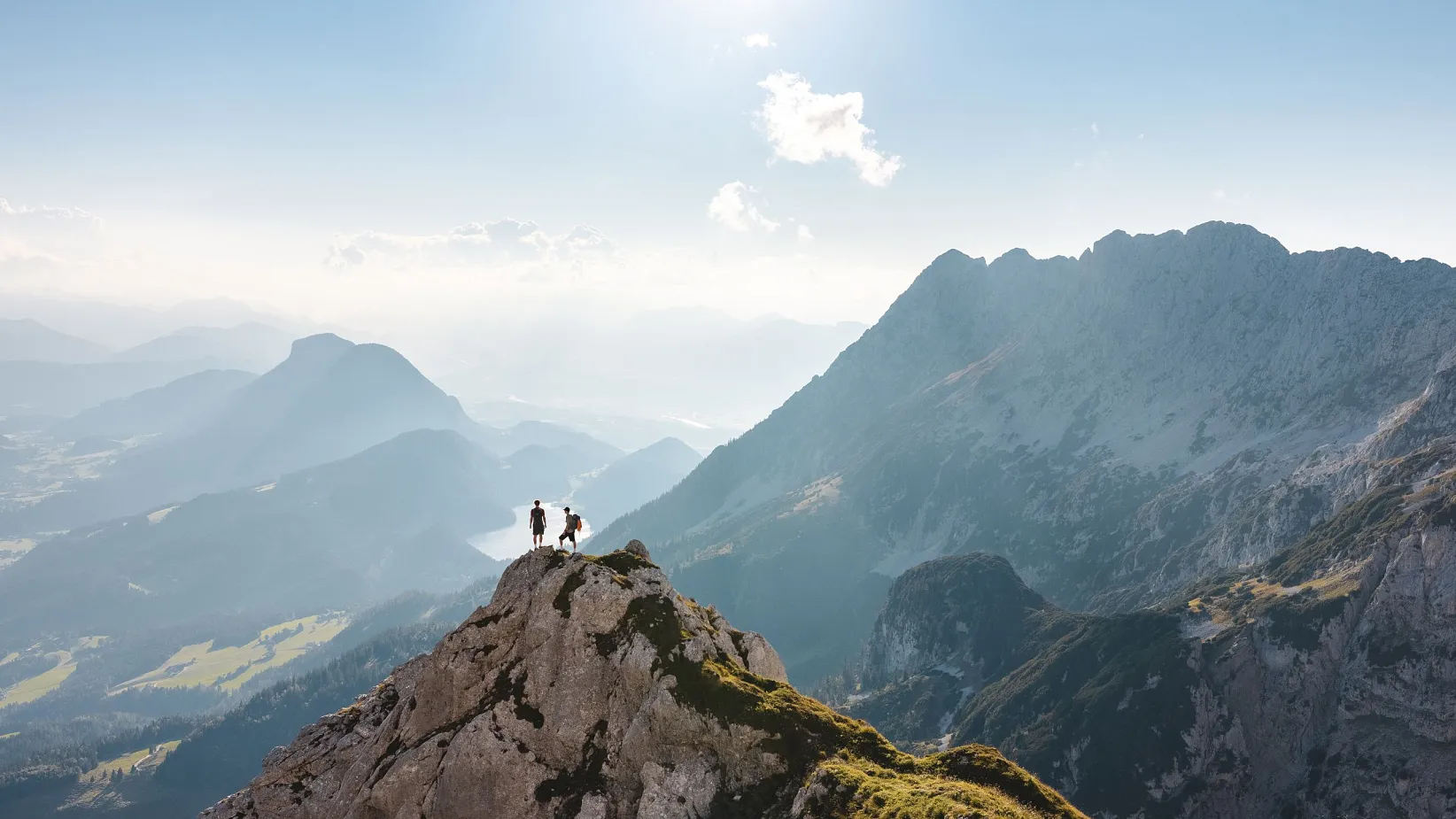
Tips and information
for your perfect hiking holiday
Hiking in Austria is an unforgettable experience. To ensure that everything runs smoothly on your hiking holiday, we have compiled all the important tips and information for your perfect mountain adventure on the Wilder Kaiser here.

Hiking map Wilder Kaiser
Our 1:25,000 scale hiking map provides you with a clear overview of all the hiking trails in the region. You will also find the most beautiful tours in Ellmau, Going, Scheffau and Söll described in more detail on the back of the map.
Experience
Enjoy
Fun
Which holiday experience suits you?
Tip
Emergency numbers
What to do in an emergency?
Dial emergency number
140 - Alpine emergency call (mountain rescue)
112 - European emergency number
133 - Police
144 - Rescue

